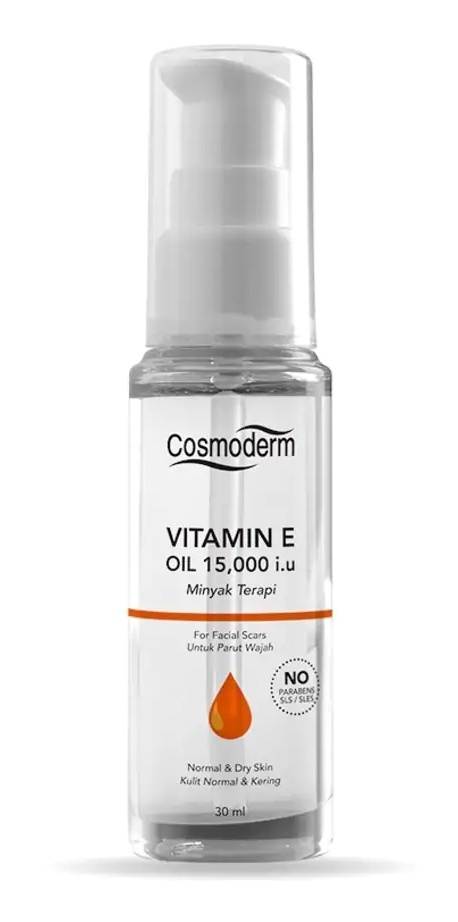
Vitamin E Oil 15,000 I.U.
A light, fragrance-free, facial therapy oil with Vitamin E and Rosehip Oil that can help rescue dry and stressed skin quickly.
Uploaded by: saufy00 on
Highlights
Alcohol Free
Fragrance and Essential Oil Free
Key Ingredients
Skim through
| Ingredient name | what-it-does | irr., com. | ID-Rating |
|---|---|---|---|
| Vitamin E Oil | antioxidant | 0-3, 0-3 | goodie |
| Rosehip Oil | emollient | goodie | |
| Rosa Canina Fruit Extract |
cosmoderm Vitamin E Oil 15,000 I.U.Ingredients explained
Vitamin E Oil - goodie
Also-called: Vitamin E;Tocopherol |
What-it-does:
antioxidant
|
Irritancy:
0-3
|
Comedogenicity:
0-3
- Primary fat-soluble antioxidant in our skin
- Significant photoprotection against UVB rays
- Vit C + Vit E work in synergy and provide great photoprotection
- Has emollient properties
- Easy to formulate, stable and relatively inexpensive
Rosehip Oil - goodie
Also-called: Dog-Rose Seed Oil, Rosehip Seed Oil;Rosa Canina Seed Oil |
What-it-does:
emollient
The oil coming from the seeds of dog-rose, a wild rose species native to Europe, northwest Africa and western Asia. It's a nice emollient, moisturizing plant oil loaded with skin-nourishing fatty acids (linoleic acid - 51%, linolenic acid - 19% and oleic acid - 20%).
If you start to dig a bit deeper into the rosehip oil topic, you will soon see that there are lots of species of rose, and it's all a bit confusing to know what the differences and similarities between the oils of the different roses are. As far as our research can tell, here is the gist.
What-it-does:
astringent

You may also want to take a look at...
| what‑it‑does | antioxidant |
| irritancy, com. | 0-3, 0-3 |
Pure Vitamin E. Great antioxidant that gives significant photoprotection against UVB rays. Works in synergy with Vitamin C.
[more]
| what‑it‑does | emollient |
The oil coming from dog-rose. A nice emollient, moisturizing plant oil loaded with skin-nourishing fatty acids (linoleic acid - 51%, linolenic acid - 19% and oleic acid - 20%).
[more]





